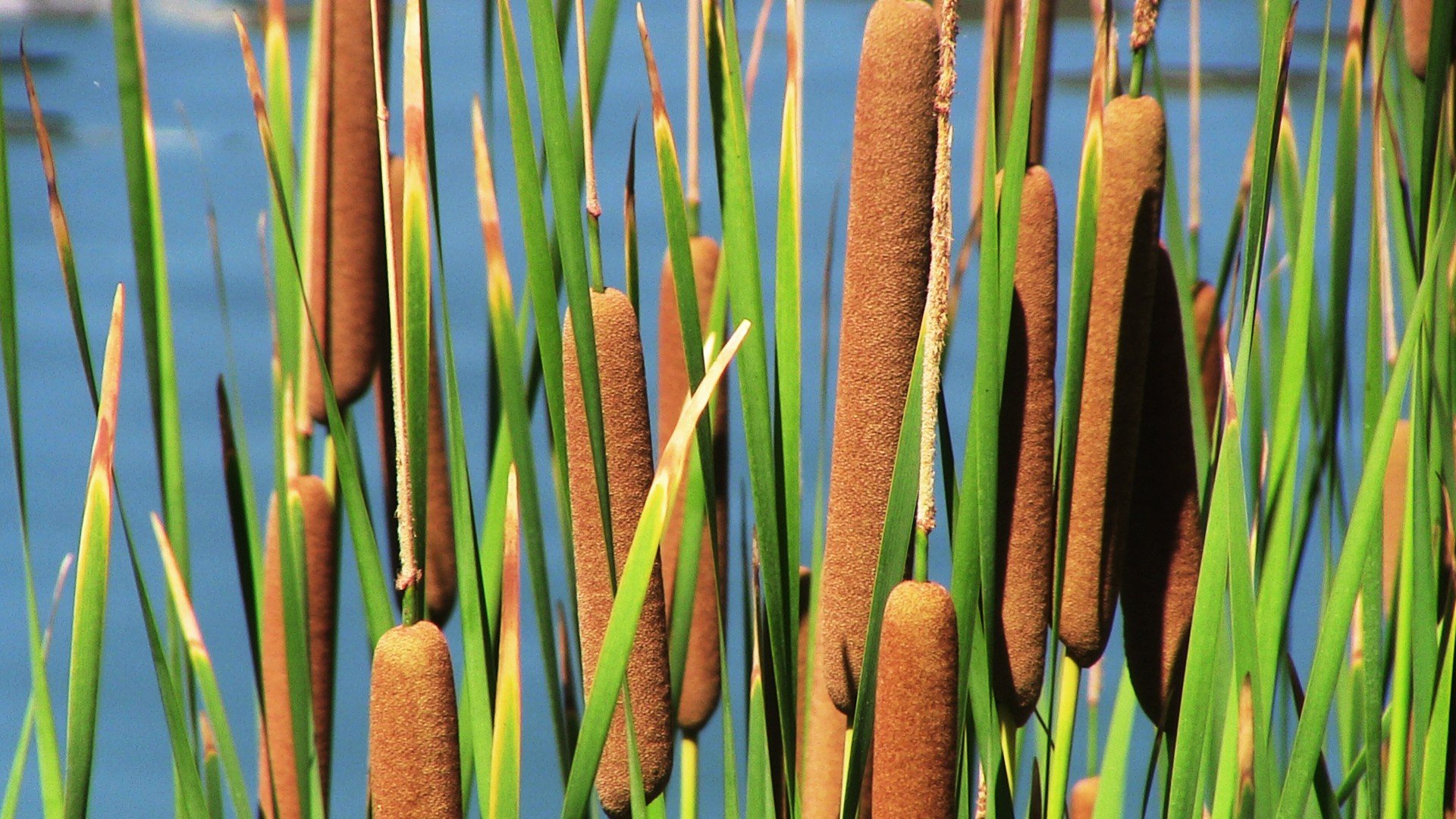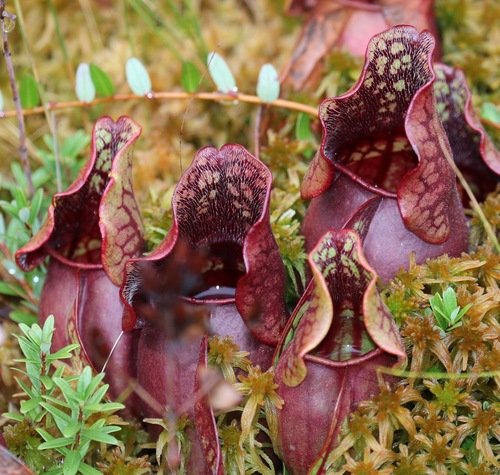Wetlands are very common in Alberta and nearly 21% of our province is covered by them. They act as biodiversity hotspots for flora, fauna, and fungi (with about 400 species of plants alone) providing the unique conditions required for these species to thrive. They also provide regulating services such as carbon storage, water filtration, and water storage. Wetlands are also important to many peoples for traditional and spiritual purposes including the Métis and First Nations. Here are a few interesting plants you could see the next time you explore a wetland area.
CC
Cattail Pasihkânak
Cattails are well-known and dominant in wetlands throughout North America, with fields of them standing in the water. They are dominant species and easily outcompete many of their neighbours. While it may seem strange, the long brown head of the plant is actually a dense spike of female flowers, topped with a smaller portion of male flowers that pops off after pollination. Cattails provide food and shelter for a wide variety of wildlife and have also been used by Indigenous peoples for centuries. The entire plant is edible, with the tender young shoots, which taste like cucumber, being particularly good stir fried. Cattails have also been used as a weaving material for many different items such as bags and baskets, and the fluff can be used as stuffing for bedding.
Photo by EALT
Horsetail Miscanikwacâsôsôsa
Horsetails are an incredibly old genera of plants predating flowers and seeds, and reproduce through spores released from the cones (strobili) on their tips. Their stems are hollow and segmented, with frond-like leaves giving them a “bottle-brush” appearance. Horsetails can contain a high amount of silica which gives them a rough texture and can potentially be used as sandpaper or as a cleaning tool (like a bottlebrush!). Traditionally horsetails have had many uses including treating kidney and urinary problems, as a painkiller, and as a topical treatment for wounds.
Photo by EALT
Labrador Tea Maskihkohpakwa
Labrador Tea or “Muskeg Tea” is a deeply valuable herb that grows in wet forest areas. Its leaves are hairy, and when fully grown they are green on top and reddish-brown underneath. They also produce beautiful 5-petaled white flowers and generally grow to within 1 meter tall. The leaves have been collected for generations and brewed into - you guessed it - tea. The tea is thought to act as a diuretic and help with kidney problems as well as cough. Fun fact, many people believe that ingesting large amounts of Labrador Tea can be toxic. This is due to the presence of ledol, however North American Labrador Tea contains significantly less Iedol than the Eurasian variety that caused these stories, and it is safe to drink, though caution should always be taken by pregnant or breast-feeding mothers.
Photo by Dan Mullen, iNaturalist
Sweet-flag Wîhkês
Also known as “Rat Root”, it is a sweet smelling member of the Acoraceae family, the oldest monocot plant family. They can easily be confused with cattails, but the inflorescence is very different, occurring partway up the stem as opposed to the apex. They are also green and rough as opposed to brown and fluffy. They grow on the edge of water bodies and are of medium height, up to 80 cm tall. Sweet-flag, specifically the root or rhizome of the plant, has been used for many generations as a medicine, with the root being chewed for cough, colds, headaches, pain, etc. Consuming large quantities of Rat Root was also thought to act as a stimulant. Young tender stalks can be eaten as well.
Photo by Rick Nirschl, iNaturalist
Purple Pitcher Plant Ayîkitâs
This tiny little plant can easily be missed, growing up to only 30 cm long, but they are incredibly beautiful. They grow in bogs and lure in prey by their colours and the sweet nectar within the “pitcher”, which are actually leaves. Prey slips in the pitcher and drowns, slowly feeding the plant as they decompose. This plant was used for menstrual, respiratory and heart issues. Clyde fen, near to Sundew and Carbyn Creek Wildlands is a hotspot for these plants within driving distance of Edmonton.
Unfortunately nearly 70% of wetlands near developed areas have been lost which is why conserving what we have left is so important. EALT has several lands with natural wetland areas, including Carbyn Creek Wildlands, JBJ Macdonald, and Sundew which are accessible to the public and contain many of the plants described above.
If you would like to read more on Wetlands or Indigenous uses for plants please visit:
Youth-Department-Traditional-Plant-Flashcards.pdf (albertametis.com)
A Cree Healer and His Medicine Bundle by David Young, Robert Rogers and Russell Willier
Do not use or consume plants without proper knowledge or experience; please consult an expert.





